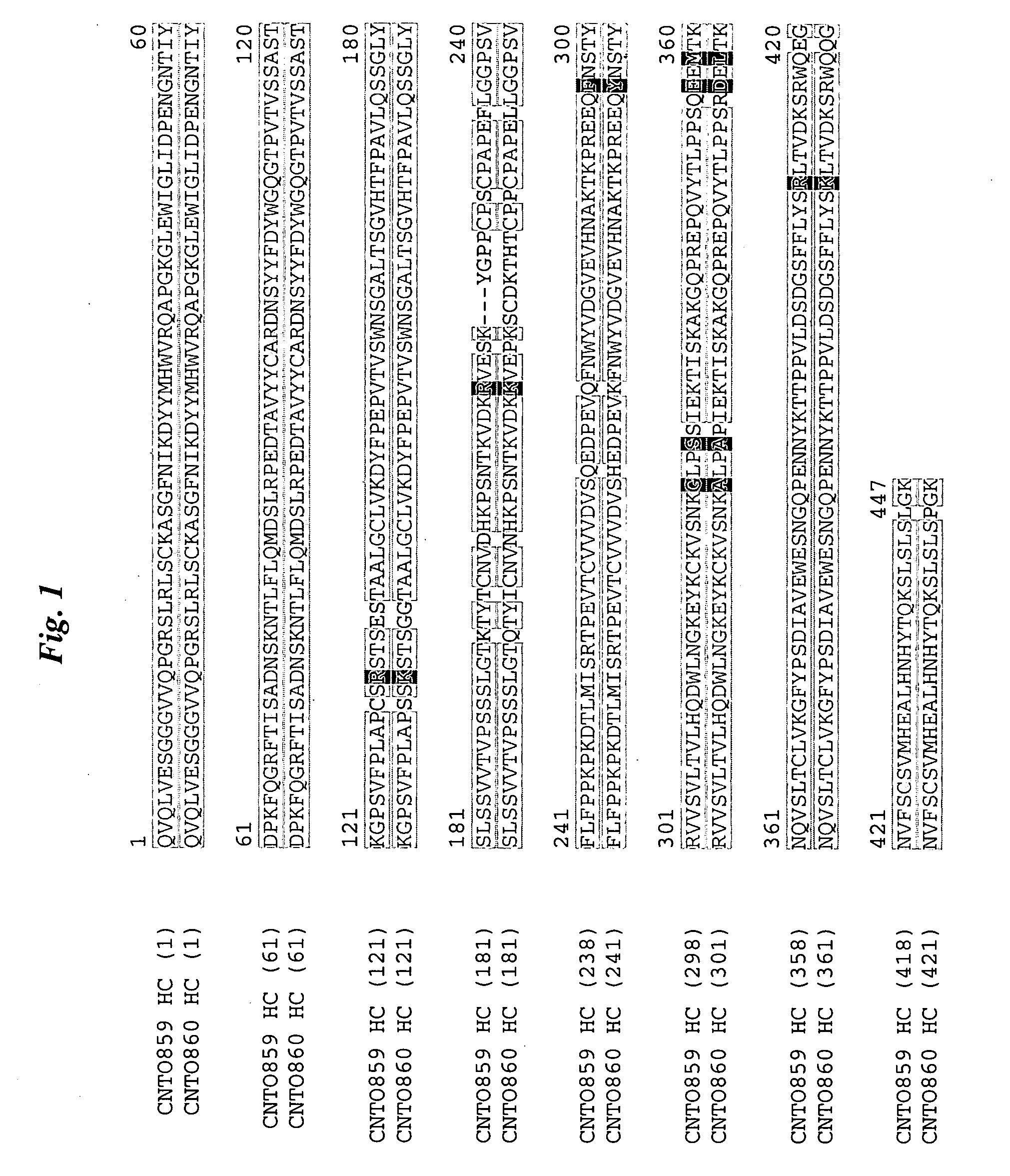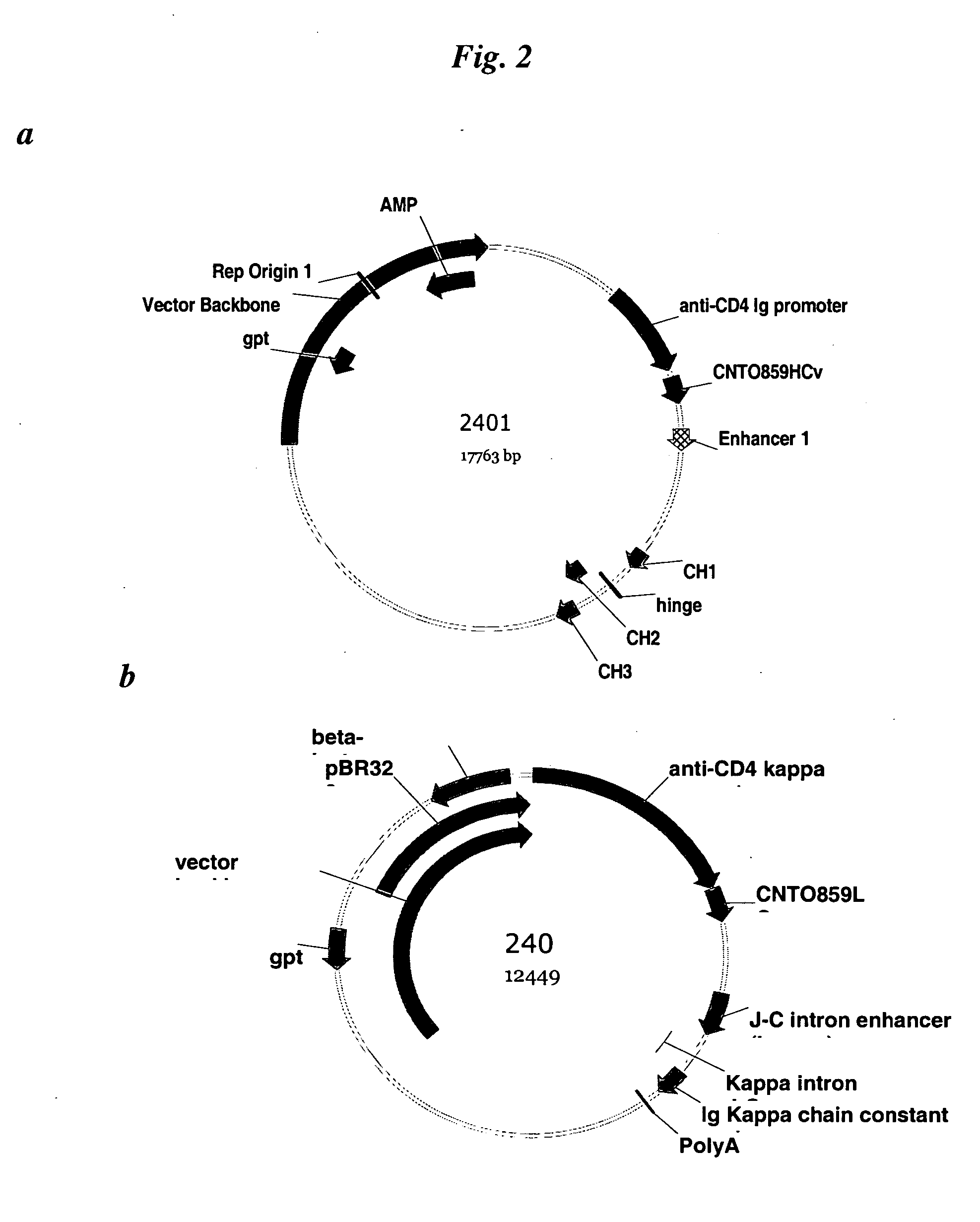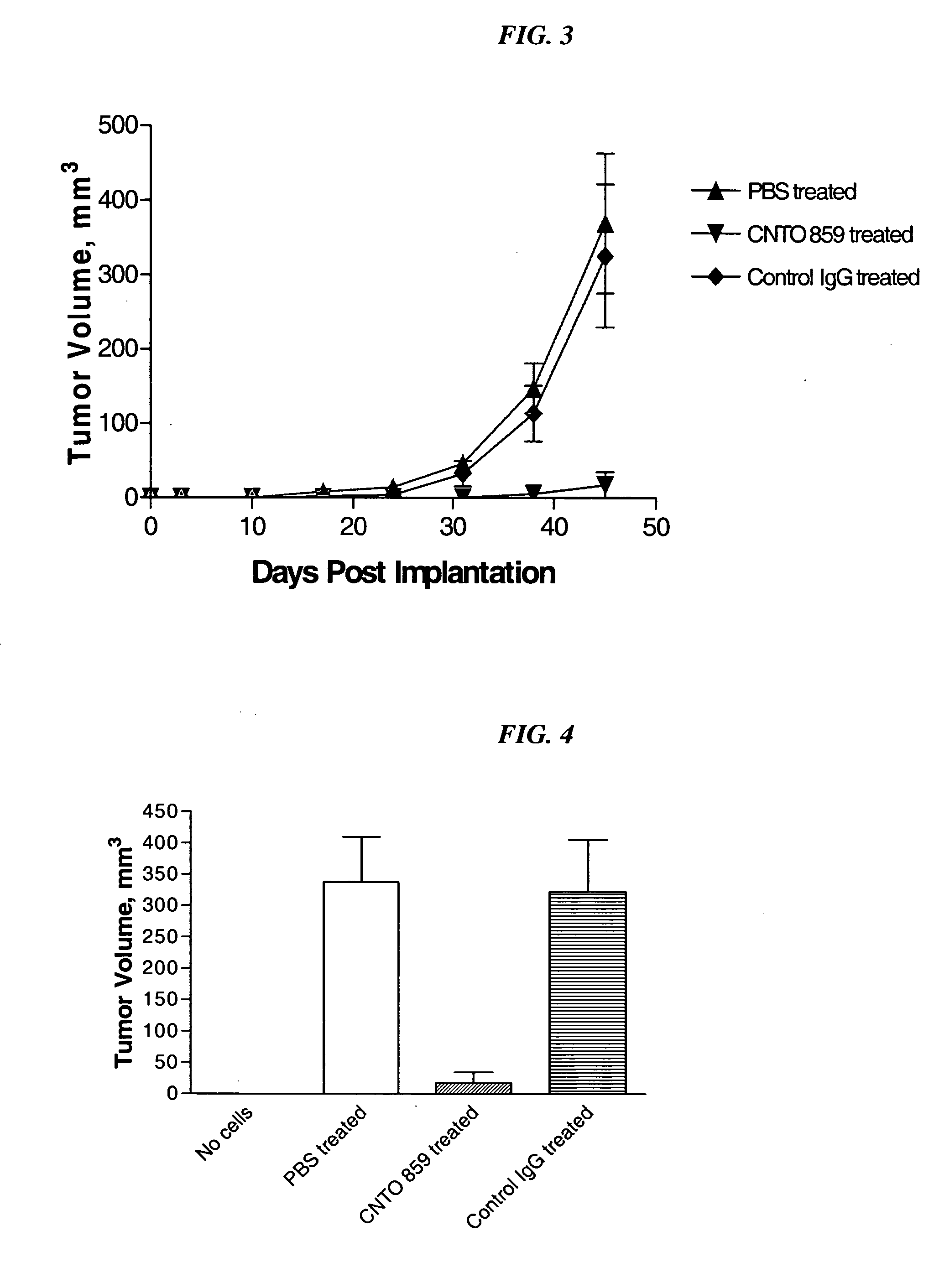Anti-tissue factor antibodies and compositions
- Summary
- Abstract
- Description
- Claims
- Application Information
AI Technical Summary
Benefits of technology
Problems solved by technology
Method used
Image
Examples
example 1
Preparation of IgG1 Tissue Factor Antibody (CNTO860)
[0225] For oncology indications it is generally preferable to use a human IgG1 isotype subclass antibody, rather than IgG4, to maximize ADCC and CDC mechanisms of tumor cell killing. The IgG1 version of CNTO 859 is disclosed here and is designated CNTO 860.
[0226] An additional property of human IgG4 isotype antibodies is their tendency to lose their inter-chain disulfide bonds via isomerization with intra-chain residues, allowing the two antigen binding halves of the molecule to dissociate from each other and associate with unrelated IgG4 half molecules. Monovalency is undesirable for a therapeutic molecule as the avidity of binding of the antibody for its target is reduced. Therefore, a Ser to Pro mutation in the hinge region at aa residue 228 as shown in SEQ ID NO: 2 of the antibody prevents this phenomenon.
Preparation of CNTO860 Heavy and Light Chain Expression Plasmids
[0227] The CNTO860 heavy chain expression plasmid was p...
example 2
Effect of Anti-TF Antibody on Human Breast Carcinoma in an Orthotopic Xenograft Model
[0230] In this example, an orthotopic tumor growth model using the human breast carcinoma cell line, MDA MB 231, injected into the mammary fat pad of SCID / Beige mice was used to test the anti-tumor effect of CNTO 859. In addition, the effect of variations on the structure of anti-tissue factor antibody were compared: one differing in human IgG subclass identity CNTO 859 (IgG4) and CNTO 860 (IgG1); and modification of the FcR binding region CNTO 859 designated CNTO 859 ala / ala where residues 235 and 23 are replaced with alanine residues. Substitution of amino acids Phe234 and Leu235 with ala residues in an IgG4 has been shown to greatly reduce Fc receptor binding, a prerequisite for ADCC activity (Xu D, et al. (2000) Cell Immunol 200:16-26).
[0231] Materials and Methods Four week-old female SCID / Beige mice (C.B.-17 / IcrCrl-scid-bgBR) from Charles River Laboratories were obtained and acclimated for 10...
example 3
Activity Profiles
[0247] Native antigen binding affinity and measures of coagulation inhibition were performed using CNTO859 and CNTO860.
[0248] Flow Cytometric Analysis. MDA-MB-231 cells (3×105) were stained with log-fold titrated amounts of CNTO 859 in serum-free RPMI media for 1 hr on ice. After multiple washes, bound CNTO 859 was detected with a PE conjugated goat-anti human Ig (10 ug / mL) for 30 min on ice. Cells were washed and fixed in 1% paraformaldehyde and total fluorescence was detected on a FACS Calibur.
[0249] Factor X Activation Assay. Human brain extract and FVIIa was added for 10 min to allow FVIIa to bind to tissue factor. At t=0, increasing concentrations of FX with or without CNTO 859 or CNTO 860 was added. The reactions were quenched with EDTA at various times. S2765, a substrate of FXa, was added and the conversion of S2765 substrate to a chromogenic product was monitored at 405 nm every 12 s for 10 min. The amount of FXa produced in the reaction was determined u...
PUM
| Property | Measurement | Unit |
|---|---|---|
| Fraction | aaaaa | aaaaa |
| Molar density | aaaaa | aaaaa |
| Molar density | aaaaa | aaaaa |
Abstract
Description
Claims
Application Information
 Login to View More
Login to View More - R&D
- Intellectual Property
- Life Sciences
- Materials
- Tech Scout
- Unparalleled Data Quality
- Higher Quality Content
- 60% Fewer Hallucinations
Browse by: Latest US Patents, China's latest patents, Technical Efficacy Thesaurus, Application Domain, Technology Topic, Popular Technical Reports.
© 2025 PatSnap. All rights reserved.Legal|Privacy policy|Modern Slavery Act Transparency Statement|Sitemap|About US| Contact US: help@patsnap.com



